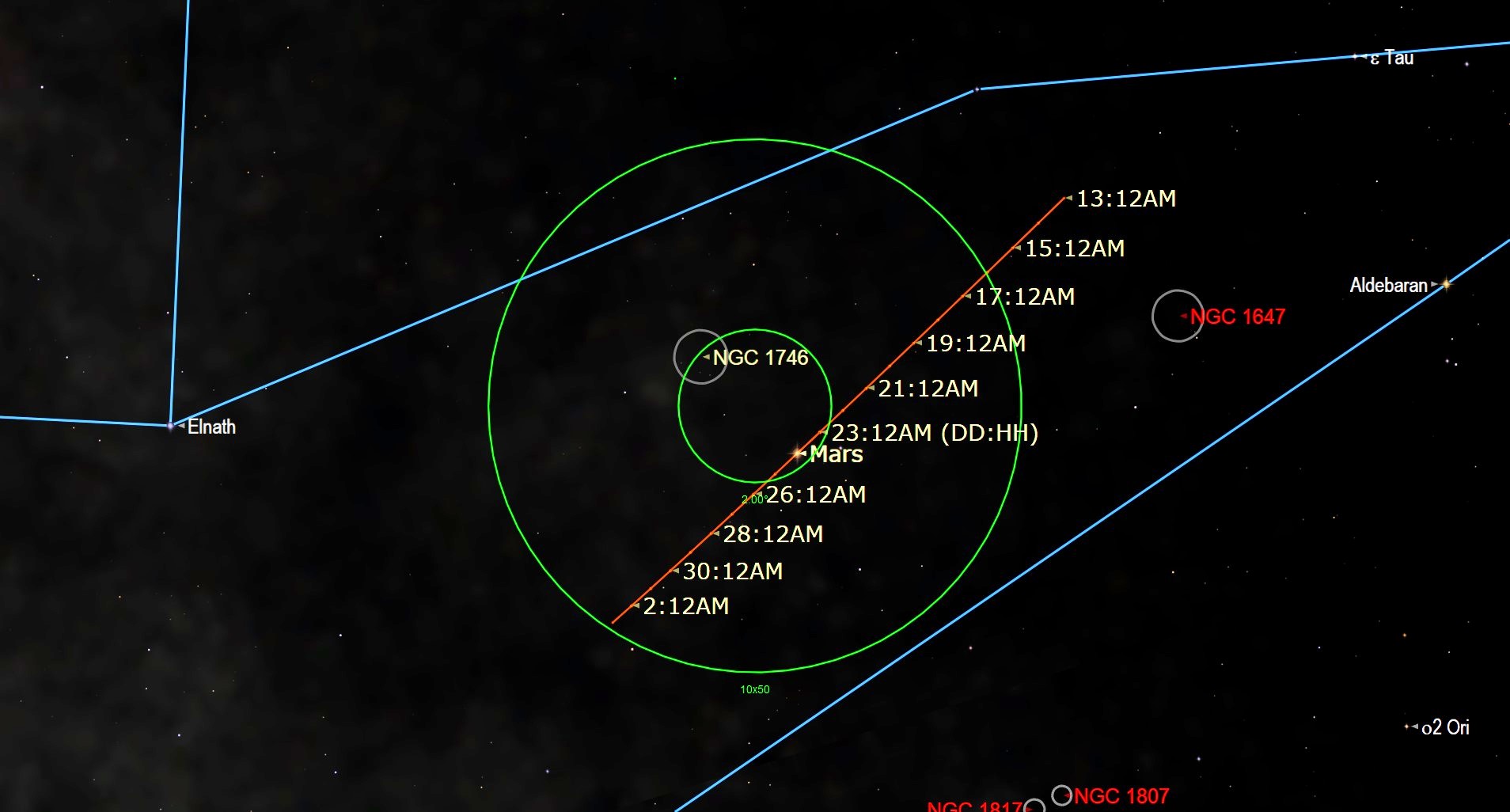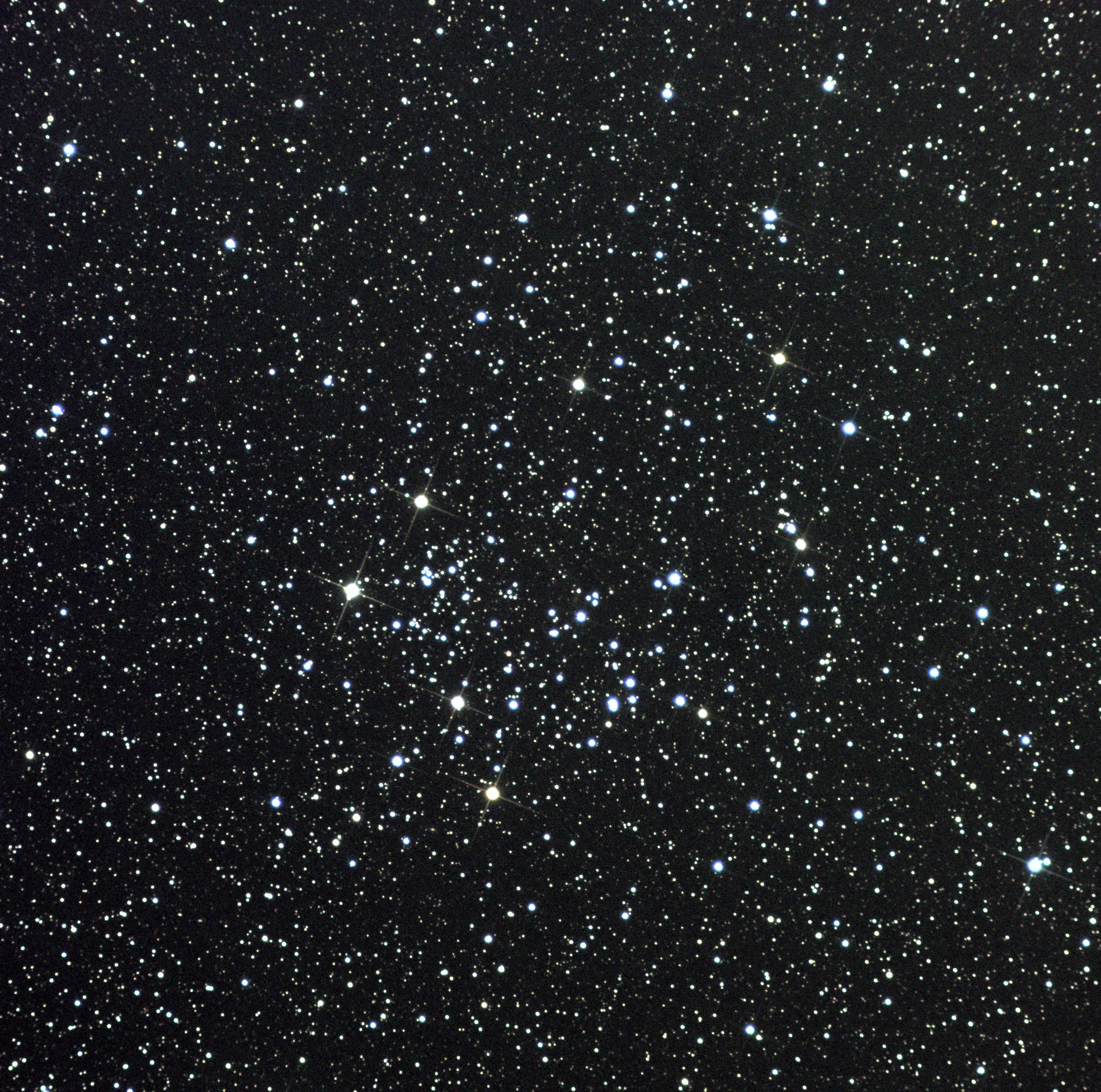See Mars pass an asterism in the Taurus constellation on Saturday (Sept. 24)
Mars will sit below the star cluster in the constellation of Taurus for a few days following Saturday.

On Saturday (Sept. 24) and for several days around it, Mars will be visible by a star cluster in the constellation of Taurus labeled NGC1746 by astronomers.
While observing the Red Planet's closest approach, the stars in NGC1746 will be a loose 'clump' of stars roughly the width of a thumb above Mars and to the left. After Saturday the orbital path of Mars will see it migrate below NGC1746 and move to the left.
Because of its visual magnitude of 6.1, NGC1746 can be easily spotted with a pair of binoculars. Mars will brighten during September reaching a magnitude of -0.59 (with the minus symbol denoting very bright objects) meaning that when Mars is closest to the star cluster, it can be seen with binoculars. The two are close enough on Saturday to see together with a telescope.
Related: Night sky, September 2022: What you can see tonight [maps]
According to In-The-Sky.org, the star cluster will be visible in the dawn sky over New York and reaches an altitude of 72° above the southern horizon. (A fist at arm's length corresponds to around 10 degrees.) NGC1746 is wider than the full moon in the sky and fades from view at around 5:37 a.m. EDT (0937 GMT) as dawn breaks.
There is some debate about the nature of NGC1746, located around 2,500 light-years from Earth and first described by German astronomer Heinrich Louis d'Arrest in 1863 and included in astronomy's New General Catalogue or NGC.
For many years it has been considered an open cluster. An open cluster is a collection of a few thousand stars that formed when dense patches in the same molecular cloud of cold gas undergo gravitational collapse.
Get the Space.com Newsletter
Breaking space news, the latest updates on rocket launches, skywatching events and more!

There is now some doubt as to whether this is the case, however, with many astronomers suggesting that NGC1746 is actually a random association of unrelated stars of different origins against a dense background starfield. If correct, this means NGC1746 is a type of astronomical association called an asterism.

Looking for a telescope to see Mars? We recommend the Celestron Astro Fi 102 as the top pick in our best beginner's telescope guide.
Asterisms are loose collections of stars that are associated only by their positions in the night sky above Earth similar to the constellation classification system. This means that some stars in an asterism could be closely located in space, while others just appear close together from our vantage point here on Earth.
Visible with the naked eye, some asterisms are small and very simple, while others are much larger and more complex. The most famous example of an asterism is arguably the Big Dipper, comprised of the seven brightest stars of the constellation Ursa Major , or the Great Bear.
Following its close encounter with NGC1746, Mars will reach its closest distance to Earth on Dec. 1, 2022, when skywatchers should be able to distinguish some of its dark surface features.
Whether you're new to skywatching or a seasoned veteran, be sure not to miss our guides for the best binoculars and the best telescopes to spot Mars, star clusters, and other objects in the night sky. For capturing the best moon pictures you can, check out our guide for photographing the moon, along with our recommendations for the best cameras for astrophotography and best lenses for astrophotography.
Editor's Note: If you snap a photo of Mars near NGC1746 and would like to share it with Space.com's readers, send your photo(s), comments, and your name and location to spacephotos@space.com.
Follow us on Twitter @Spacedotcom or on Facebook.
Join our Space Forums to keep talking space on the latest missions, night sky and more! And if you have a news tip, correction or comment, let us know at: community@space.com.

Robert Lea is a science journalist in the U.K. whose articles have been published in Physics World, New Scientist, Astronomy Magazine, All About Space, Newsweek and ZME Science. He also writes about science communication for Elsevier and the European Journal of Physics. Rob holds a bachelor of science degree in physics and astronomy from the U.K.’s Open University. Follow him on Twitter @sciencef1rst.









